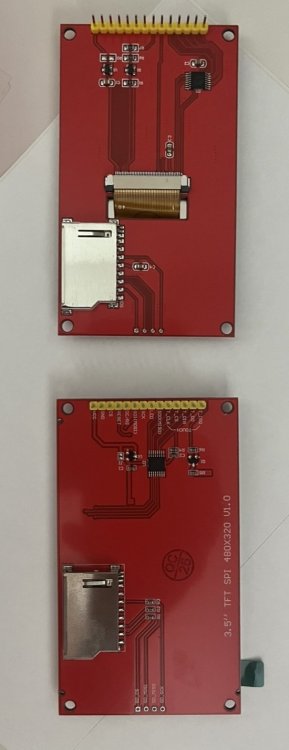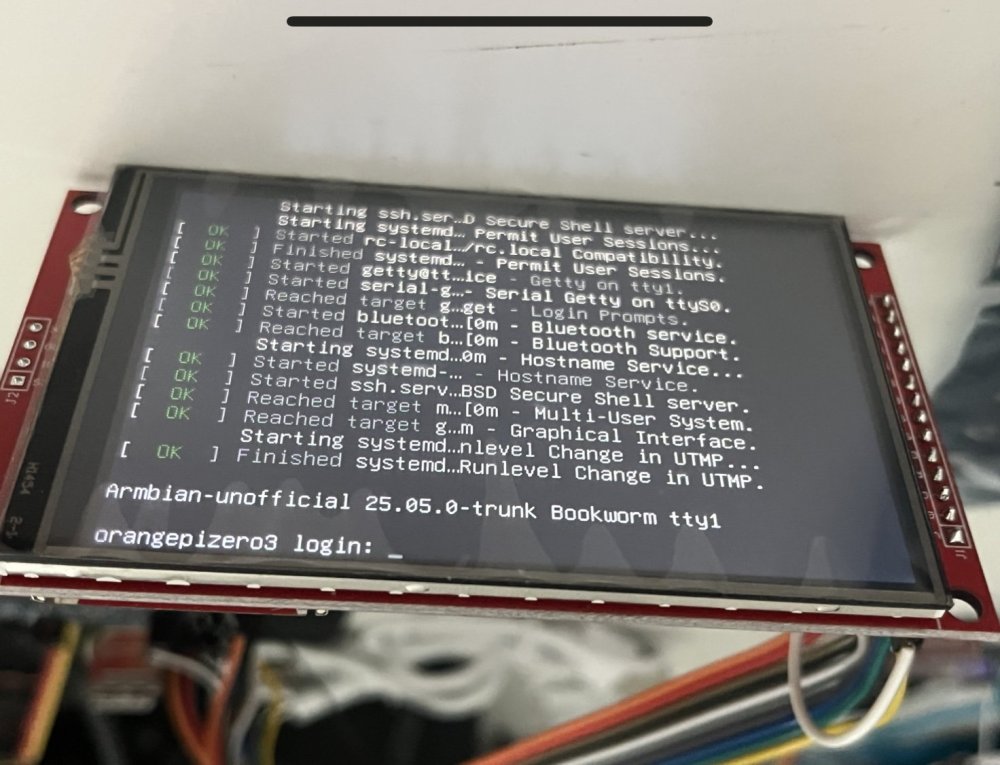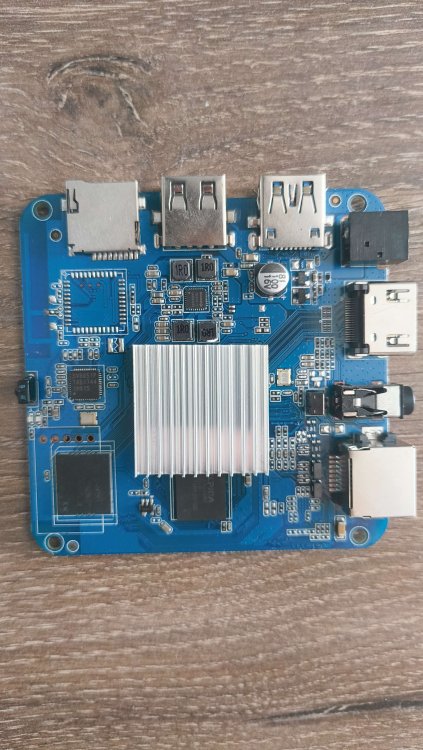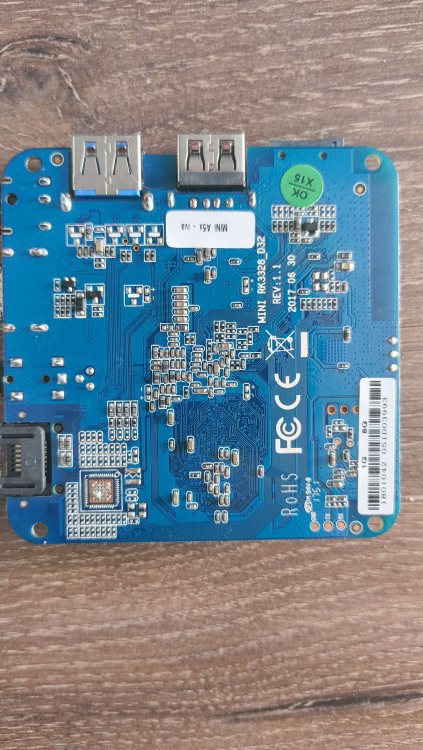All Activity
- Today
-
I've attached the .xsession-errors log file content. As in regards to updating packages.... I always update my board every time I start it and I don't really pay attention to what it updates as I always update everything. After you mentioned about xsession errors, I noticed that in the bottom left corner there was a drop down list with the xsession (wayland and X11). I saw that by default Wayland is selected and when I selected X11 it just worked. xerror.log
-
Probably because nobody implemented this yet. Feel free to do so and send a PR.
-

Kernel 6.12.20 Banana Pi M2 zero USB doesn't work
Werner replied to Bernd's topic in Allwinner sunxi
moved -
Ok, maybe I made a mistake before. I tried with an no secure-boot .img file and it give a long list of DRAM params and I put it in the file below. But I don't know What I can do with it... I will appreciate your help. Thanks. DRAM_Transpeed_M98txt
-

Driving the ili9488 LCD (4.0 inch cheap chinese clone)
robertoj replied to robertoj's topic in Allwinner sunxi
I received my new LCD today. It is a 9486 but luckily it worked with my 9488 dts HOWEVER: The touch xpt2046/ads7846 is not sending any events…checking with evtest… same dts works with the ili9488 4.0” I already tried changing the GPIO polarity (level and clock transition) has anyone worked with any of the red 3.5 lcd ili9488 or 9486 -
Thanks again @Nick A, I already did it, the file I got, cant understood well, and there are very low information about dram, just 3 params dram {phandle = <0x7a>;}; vcc-dram = <0x04>; dram = "/dram"; dtb.0.dts
-
I don't think increasing the SPI clock can help Try adding "BGR=<1>;" under the rotation line... this works for the ili9341, but i dont know about the driver that you use.
-

sleep & wake on same pin for NanoPi Neo v1.4 Armbian-23 6.1.63
Dandaman46 replied to dandan7932's topic in Allwinner sunxi
Hi Dan, how did you go with this one. Any luck? I didn't know these chips supported sleep and hybernate modes. -
hello, agesome! The same thing happened to me, test 20mhz (20000000), I suggest increasing above 32mhz and test. I'm using mine at 46mhz and it's normal, but it used to give an error, it wouldn't update the screen, it would freeze, now it's normal because I disabled “dma-names=””;” Try it and let me know.
- Yesterday
-
I tried, unfortunately the other one I have here at home doesn't recognize when I use it. To try another one, I'll have to buy a new one... =(
-
I have uploaded an updated version here. Also, for thoses who want to use internal emmc (boot without sdcard), you can run this script: You can reinstall android using this, connecting DQ08's usb2 port (using a male-male usb cable) to the computer while pushing the button in the AV connector. Then, in the app (extracted to c:\), choose firmware / firmware.bin / restore / run.
-
Armbian_community_25.5.0-trunk.538_Orangepizero2w_bookworm_current_6.12.23_minimal.img When try to boot. It get stuck trying to boot from emmc. It does not have emmc. After several power restart sometimes it boots form microsd. also it ask for tags which has only one option "Solved". I had to tag this topic as solved in order to be able to submit it.
-
I have noticed that when building images using the same kernel but selecting Ubuntu or Debian base (Bookworm vs Jammy), some hardware doesn't work on one of the images. Since the kernel is identical, why is not the hardware support the same? Is there a different build script for the two bases? Different userspace drivers? Just wondering..
-
hey so i have a rk3328 tv box with 1gb and 8gb flash , wanted to install linux on it for fun , but failed here is what i did. i couldnt boot from sd so followed (https://forum.armbian.com/topic/17597-csc-armbian-for-rk3318rk3328-tv-box-boards/?do=findComment&comment=130453) the file in the comment was unavailabe so i got the MiniLoaderAll.bin from here (http://112.124.9.243/dvdfiles/RK3328/tools/) everything with rkdeveloptool went okay , but after flashing the image on the emmc it still didnt want to boot , but now i could boot multitool from the sd card and flash the image from there. however still nothing , tried to burn the image directly on the sd card and boot form there but still doesnt boot , tried rkdeveloptool again , nothing , but now i cant even use rkdeveloptool , when i plug it to my laptop "lsusb" doesnt even show it . it still boots form the sd card with multitool and thats it . it only boots when the sd card has multitool. tried flashing it a few more times from multitool but still nothing. is it bricked? also sorry if the post is hard to read , my english is not good and im new to this stuff. help appreciated / i dont know how to get my device's dtb / the only dmesg i found was inside multitool message (3).txt
-
During the installation process of Armbian you set admin password, make a new user, set time zone and system langue, BUT not the keyboard layout... Any reason this is not part of the default armbian install process? Keyboard layout should be the first option to set during boot.
-
I just tested the latest, 2025 May, built image with default/recommended options and there are some missing features. Here is what I have tested: LAN yes WiFi yes BT yes USB3 *partly, some devices are not detected at all, some will take a few minutes before detected* GPU Mali-G610 (Panfrost) HDMI audio *no* Fan control yes temp. sensor htop *no* Temp. sensor Gnome *no* Other: some cursor graphic glitches Armbian-unofficial_25.05.0-trunk_Rock-5c_noble_current_6.12.28_gnome_desktop.img Any ideas on how to get more features supported?
-
I hope the topic is on the right place ? It should only be a hint ! Kernel 6.12.20 for the banana Pi M2 zero doesn't support USB. I fixed this by reinstalling kernel v6.6.75. Regards Bernd
-
@rafaeldavid Try a different sdcard.
-
At a guess, you are probably running the panthor gpu driver rather than the mali kernel driver. To check this, run something like: sudo dmesg | grep -i panthor and report what comes back. Further information can be found at https://forum.jellyfin.org/t-rockchip-transcode-missing-dev-mali0 Hope this helps,
-
This week, the Armbian development team pushed several noteworthy enhancements, with improvements spanning user experience, bootloader upgrades, and broader system support. Notably, this week saw the debut of OpenMediaVault in Armbian’s software installer, a move that brings plug-and-play NAS functionality to supported boards. OpenMediaVault is a feature-rich platform that enables users to turn single-board computers into fully-fledged network storage devices. Thanks to a contribution by Igor, the integration is now available through armbian-config interface, giving users a streamlined way to install and configure OpenMediaVault without needing to manually manage services or packages. The usability of the software stack also saw a meaningful improvement. A previously persistent “Disable Wireless Hotspot?” prompt was eliminated when no hotspot had been enabled, reducing unnecessary friction during the setup process. This fix helps clarify Armbian’s default network behavior for users during first boot, particularly when configuring headless or appliance-style deployments. On the hardware front, the Orange Pi 5 Max received a key upgrade: it now boots using mainline U-Boot. This transition replaces vendor-specific boot code with upstream-supported U-Boot, easing future updates and kernel integration. A related improvement was made to the PocketBeagle2, which migrated to extlinux for boot configuration—bringing it in line with Armbian’s broader standardization efforts. Further enhancements came to the Rockchip64 platform. Previously missing Operating Performance Points (OPPs) were added to ensure proper voltage and frequency scaling across supported boards, which improves energy efficiency and stability under load. In addition, older workarounds for wireless firmware issues were removed, as upstream drivers have now resolved the compatibility concerns that necessitated them. Finally, infrastructure refinement continued with the cleanup of unused or deprecated build artifacts, keeping the codebase lean and future-proof. The team also laid the groundwork for upcoming testing initiatives to ensure that new features like OpenMediaVault are validated across a wide array of supported devices. For those interested in exploring OpenMediaVault or other curated software installations, the updated documentation is available in the Armbian Software User Guide. The post Armbian Updates: OMV support, boot improvents, Rockchip optimizations first appeared on Armbian. View the full article
-
Using screen is sufficient. No settings besides baud rate (115200 for any Allwinner) need adjustments. As mentioned above make sure your serial device is correct. If you are unsure, simply - unplug - run sudo dmesg -ew - plug in and check output in the terminal with the command above. Also make sure wiring is correct. Ground to ground and rx/tx crossed.










